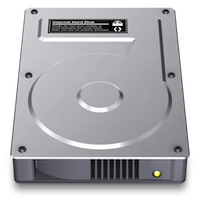A Complete Guide to Understanding Disk Optimization in Mac OS X
By admin on Jun 10, 2013 in Apple, Hardware, Mac OS
 When you work in a Windows environment having a Windows PC at your desk, you need to take account of several things, such as hard drive defragmentation, installing firewall or antivirus software, and much more. However, as opposed to Windows users, Mac users need not dive deeper into such things, as Mac does a fair bit of maintenance task itself to provide a simple computing experience to its users. The built-in maintenance routines of Mac take control of disk optimization, reducing performance overheads and ensuring a smooth operation of the system.
When you work in a Windows environment having a Windows PC at your desk, you need to take account of several things, such as hard drive defragmentation, installing firewall or antivirus software, and much more. However, as opposed to Windows users, Mac users need not dive deeper into such things, as Mac does a fair bit of maintenance task itself to provide a simple computing experience to its users. The built-in maintenance routines of Mac take control of disk optimization, reducing performance overheads and ensuring a smooth operation of the system.
Disk Optimization
Disk Optimization refers to the process of rearranging physical locations of files stored on your hard drive in order to achieve better data access times and in turn, reduce the physical movement of the hard drive’s head. File system fragmentation is the major problem that contributes to Mac slowdown. A file system is inclined to become fragmented over time as the data is saved or deleted on the hard drive. Large files are broken into small pieces that are allocated different memory locations on the hard drive. The amount of fragmentation increases as you make changes to these files or save new data. Disk optimization is performed by grouping these fragments together and allocating them contiguous memory locations on the hard drive.
Need for Optimizing Mac Hard Drives
Mac users are less often confronted with this problem as compared to Windows users. It has long been a subject of debate that whether Mac users need to go for defragmentation. Apple claims that Macs do not require a performance bump or optimization at any given point due to the following reasons:
- The intelligent HFS+ file system keeps you from filling recently freed file space, thus ensuring logically related segments of large files are stored together on the disk to avoid fragmentation.
- OS X uses a mechanism to transform a number of small allocations into one larger allocation on the disk. This operation involves defragmenting all files that are included in the group.
- A technique known as ‘Hot File Adaptive Clustering’ keeps track of all files on your hard drive that are not changed frequently and moves them to a special location on the hard drive that has the fastest access. This area is called hot zone.
- OS X examines each file you open and if the file has more than eight fragments, it defragments the file.
The above reasons might turn the argument to one side that hard drive defragmentation should not be practiced on Macs. This is because you deal with thousands of files on your Mac and a majority of these files is seldom used. If you opt for defragmentation, you end up investing your valuable time and effort for a little benefit.
When It’s Worth Doing Disk Optimization
When your hard drive is close to getting full and your system starts running at a snail’s pace, it is time to go for disk optimization. It is most often seen with users who indulge in creating or modifying large files (video editing or similar tasks). At this stage, you are likely to benefit from disk defragmentation.
Disk Optimization with Drive Defrag Mac Software
In a few cases, you can get your system up and running by doing a simple reboot. However, this may not resolve your performance woes in a majority of scenarios. Commercial Drive Defrag software are available for Mac that do a good job of streamlining files and metadata on your hard drive and reducing fragmentation. As Macs do not have an inbuilt defrag utility, these software are your best bet for optimizing hard drives and tuning up system performance.

Disk optimization is very necessary to keep your Mac OS X healthy. It is the process of rearranging scattered files in contiguous memory. I am using Stellar Drive Defrag to defrag my Mac and it is worth!!!!
Jyoti | Aug 26, 2013 | Reply